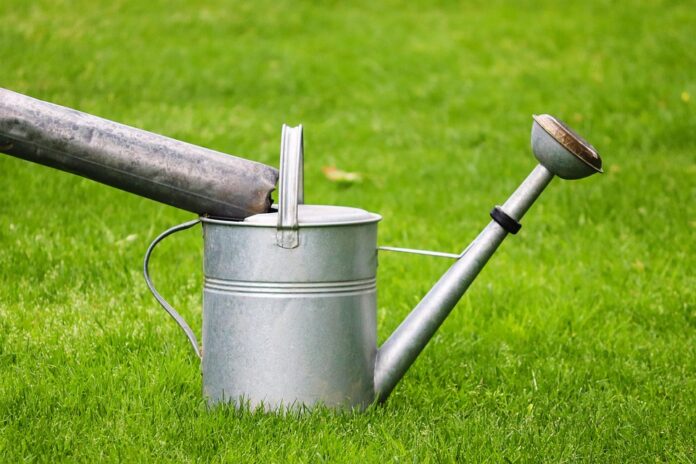Introduction
Fertigation systems have revolutionized the way farmers deliver nutrients to their crops by combining fertilizers with irrigation water. This innovative technique allows for precise control over nutrient application, leading to increased crop yields, improved quality, and resource efficiency. In this report, we will explore the benefits of fertigation systems that combine nutrients with drip irrigation, along with the financial implications, key industry players, and market trends.
Benefits of Fertigation Systems
Increased Efficiency
One of the key advantages of fertigation systems is the increased efficiency in nutrient delivery. By combining fertilizers with irrigation water and applying them directly to the root zone, farmers can ensure that plants receive the necessary nutrients in a timely manner. This precision application method helps reduce nutrient wastage and promotes better nutrient uptake by the plants, leading to improved crop health and yield.
Water Conservation
Fertigation systems can also help conserve water by delivering nutrients directly to the root zone where they are needed most. This targeted approach minimizes nutrient runoff and leaching, which can occur with traditional broadcast fertilization methods. By using drip irrigation along with fertigation, farmers can optimize water usage and reduce overall water consumption, making the system environmentally friendly and sustainable.
Improved Crop Quality
In addition to increased efficiency and water conservation, fertigation systems can also contribute to improved crop quality. By providing a balanced mix of nutrients tailored to the specific needs of the crops, farmers can enhance plant growth, development, and overall health. This results in higher-quality produce with better taste, appearance, and nutritional value, ultimately leading to increased market demand and higher prices for the crops.
Financial Implications
Cost Savings
While the initial investment in fertigation systems may be higher compared to traditional fertilization methods, the long-term cost savings can be substantial. By reducing nutrient wastage, improving crop yields, and conserving water, farmers can lower their input costs and increase their profits. Studies have shown that farmers using fertigation systems can achieve up to 30% savings in fertilizer costs and 20% savings in water usage, making it a financially attractive option in the long run.
Return on Investment
The return on investment (ROI) for fertigation systems can vary depending on factors such as crop type, size of the operation, and local market conditions. However, many farmers have reported positive ROI within the first few years of implementing a fertigation system. With increased crop yields, improved quality, and cost savings, farmers can recoup their initial investment and start realizing profits sooner rather than later.
Key Industry Players
Company A
Company A is a leading provider of fertigation systems that combine nutrients with drip irrigation. With a strong track record of innovation and customer satisfaction, Company A offers a wide range of products and services tailored to the needs of modern farmers. Their cutting-edge technology, reliable performance, and excellent customer support have made them a trusted partner for farmers looking to maximize their crop production and profitability.
Company B
Company B is another key player in the fertigation systems market, known for their high-quality products and extensive industry experience. Specializing in precision agriculture solutions, Company B offers customized fertigation systems that help farmers optimize nutrient delivery, water usage, and crop performance. Their commitment to sustainability, efficiency, and customer success has earned them a strong reputation in the industry and a loyal customer base.
Market Trends
Growth Potential
The market for fertigation systems combining nutrients with drip irrigation is expected to grow significantly in the coming years, driven by increasing demand for sustainable agriculture practices, rising awareness of resource conservation, and the need for higher crop productivity. As more farmers recognize the benefits of fertigation systems in terms of efficiency, cost savings, and environmental impact, the market is poised for continued expansion and innovation.
Technological Advancements
Advancements in technology such as automation, remote monitoring, and data analytics are expected to further enhance the performance and capabilities of fertigation systems. These innovations enable farmers to monitor and control their fertigation systems more effectively, optimize nutrient delivery based on real-time data, and make informed decisions to improve crop outcomes. With ongoing research and development in the field of precision agriculture, the future looks promising for fertigation systems and their role in sustainable farming practices.
In conclusion, fertigation systems that combine nutrients with drip irrigation offer numerous benefits to farmers in terms of efficiency, water conservation, crop quality, and financial returns. With the right technology, expertise, and market trends, fertigation systems have the potential to revolutionize modern agriculture and contribute to a more sustainable and productive food system. By leveraging the advantages of fertigation systems and staying ahead of industry developments, farmers can enhance their crop production, profitability, and environmental stewardship for years to come.




